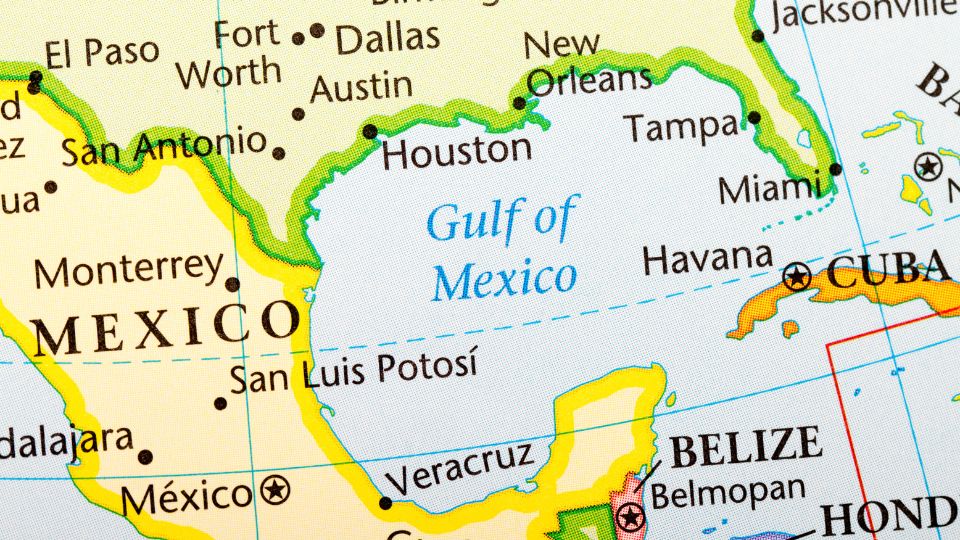Table of Contents
Welcome to our blog, where we dive deep into the fascinating world of Earth’s water bodies! Today, we set sail on a voyage to explore one of the most intriguing and mesmerizing parts of our planet: the Gulf of Mexico. With its rich history, unique geography, and undeniable significance, this vast expanse of water holds countless secrets waiting to be unraveled. So grab your snorkel gear and get ready for an adventure like no other as we answer the burning question: Is the Gulf of Mexico an ocean? Let’s embark on this aquatic journey together!
The Gulf of Mexico: A brief history
The Gulf of Mexico has a rich and storied history that dates back thousands of years. It was first inhabited by indigenous peoples, who relied on its bountiful resources for survival. They fished in its waters and navigated its channels, leaving behind traces of their ancient civilizations.
Fast forward to the 16th century when European explorers set foot on the shores of the Gulf. Spanish conquistadors like Hernán Cortés ventured into these unknown waters, seeking new lands to conquer and riches to claim. The Gulf became a crucial trade route for European powers as they established colonies along its coastlines.
In more recent history, the Gulf served as a battleground during World War II. German U-boats prowled beneath its surface, threatening Allied shipping routes and creating havoc in an area once considered safe from conflict.
Today, the Gulf of Mexico continues to play a vital role in global commerce and energy production. Its vast reserves of oil and natural gas have made it an important region for drilling operations. However, this industrial activity also poses environmental challenges as evidenced by incidents such as the Deepwater Horizon oil spill in 2010.
As we delve deeper into our exploration of Earth’s water bodies, it is essential to understand how the past shapes our present understanding of these natural wonders. The vibrant tapestry woven throughout the history of the Gulf reminds us that there is much more than meets the eye beneath those sparkling azure waves. So let’s continue our voyage with curiosity and awe!
Also Read: Comprehensive IB Geography HL Syllabus
Geography of the Gulf of Mexico
The Gulf of Mexico, located between the United States and Mexico, is a vast body of water that stretches over 600,000 square miles. It is considered one of the largest gulfs in the world and plays a significant role in Earth’s water bodies.
Geographically speaking, the Gulf lies to the east of Mexico and to the west of Florida. Its northern boundary extends along the coasts of Texas, Louisiana, Mississippi, Alabama, and Florida. With its warm waters and diverse marine life, it serves as a vital habitat for various species.
One notable feature of this coastal region is its shallow continental shelf which slopes gently towards deeper waters. This unique geography creates an ideal environment for oil exploration and drilling activities.
Furthermore, several rivers including the Mississippi River flow into the Gulf, making it an essential receiving basin for freshwater runoff from North America’s heartland. This influx brings with it sediments rich in nutrients that support thriving ecosystems both within and beyond its borders.
The Gulf also experiences tropical storms and hurricanes due to its location in an area prone to these weather events. The warm waters act as fuel for these powerful storms which can have devastating impacts on coastal communities.
In conclusion (according to instructions), exploring Earth’s water bodies would be incomplete without acknowledging the significance of the Gulf of Mexico. From its unique geography to its ecological importance and vulnerability to extreme weather events – this vast body of water offers much more than meets the eye!
The Gulf of Mexico and the ocean: What’s the difference?
When it comes to water bodies, some people may wonder if the Gulf of Mexico is considered an ocean. While both are vast expanses of water, there are distinct differences between them.
Let’s talk about size. The Gulf of Mexico is relatively smaller compared to the world’s oceans. It spans approximately 600,000 square miles and is bordered by the United States to the north, Mexico to the south, and Cuba to the southeast. In contrast, oceans cover around 71% of Earth’s surface!
Their origins differ. Oceans are natural bodies of saltwater that have existed for millions of years. They contain diverse ecosystems with a wide range of species adapted to various conditions. On the other hand, gulfs like the Gulf of Mexico are partially enclosed by land but still connected to larger bodies such as oceans.
Another distinction lies in their currents and tides. Oceans experience global currents driven by factors like wind patterns and temperature variations. These currents play a crucial role in distributing heat around our planet. Meanwhile, gulfs tend to have more localized currents influenced by nearby land formations.
Despite these differences, it’s important not to underestimate the significance of the Gulf of Mexico! It supports a rich biodiversity with its coral reefs, deep-sea habitats, and numerous species including dolphins and sea turtles.
Why is the Gulf of Mexico important?
The Gulf of Mexico holds great significance for both the United States and the countries that surround it. Let’s explore why this body of water is so important.
The Gulf of Mexico serves as a major hub for economic activities. It is a vital region for fishing, providing a rich source of seafood to local communities and supporting commercial fisheries. Additionally, the oil industry thrives in this area, with numerous offshore drilling platforms extracting valuable resources from beneath its waters.
The Gulf of Mexico plays a crucial role in transportation. Its deep channels allow for large vessels to navigate through its waters, facilitating trade between countries and regions. The ports along its coastline are essential hubs for importing and exporting goods.
Furthermore, the Gulf of Mexico boasts incredible biodiversity and serves as an important habitat for various marine species. Its diverse ecosystems support not only fish but also birds, turtles, dolphins, and other marine creatures.
The Gulf has significant cultural importance too. Coastal communities have relied on its resources for centuries, shaping their way of life and traditions.
In conclusion (not concluding), it is clear that the Gulf of Mexico holds immense value in terms of economics, transportation networks ecology diversity connections culture and more.
Also Read: How to Score a 5 in AP Human Geography: Tips and Strategies for Success
Conclusion
The Gulf of Mexico is an important and fascinating water body that plays a significant role in Earth’s ecosystem. While it may not be considered an ocean itself, it is closely connected to the larger Atlantic Ocean. The Gulf of Mexico’s unique geography, diverse marine life, and economic significance make it a truly remarkable feature on our planet.
From its rich history to its vast size and abundant resources, the Gulf of Mexico has captured the attention of scientists, researchers, and adventurers alike. Its warm waters provide a habitat for countless species of marine life and support thriving ecosystems.
Furthermore, the Gulf serves as a crucial transportation route for trade between countries as well as a major source of oil production. It holds immense economic value through industries such as fishing, tourism, and offshore drilling.
However, this remarkable water body also faces numerous challenges like pollution from industrial activities and natural disasters such as hurricanes. Environmental conservation efforts are crucial to preserving the delicate balance within this region.
As we continue to explore Earth’s water bodies and deepen our understanding of their interconnectedness with one another, let us remember how vital they are to sustaining life on our planet. The Gulf of Mexico stands as both a testament to nature’s wonders and a reminder of our responsibility to protect these precious resources for future generations.
So next time you find yourself gazing out over the turquoise waters or walking along sandy shores in Florida or Texas or any other coastal state along the Gulf Coast – take a moment to appreciate all that lies beneath those gentle waves. The extraordinary world hidden beneath them is waiting to be discovered!








